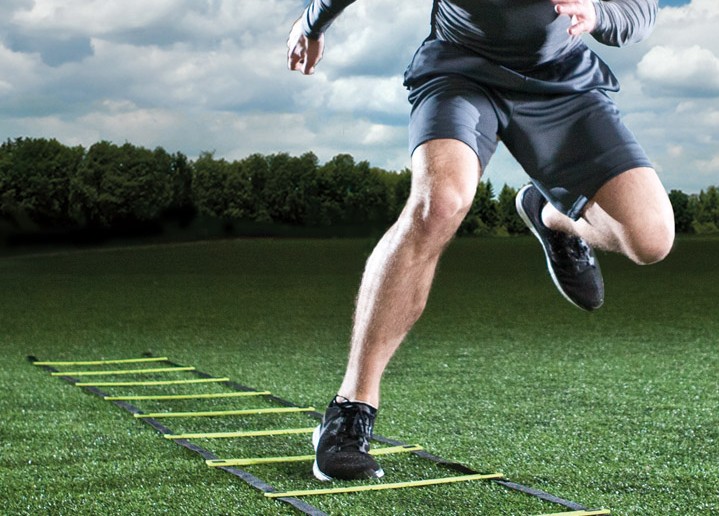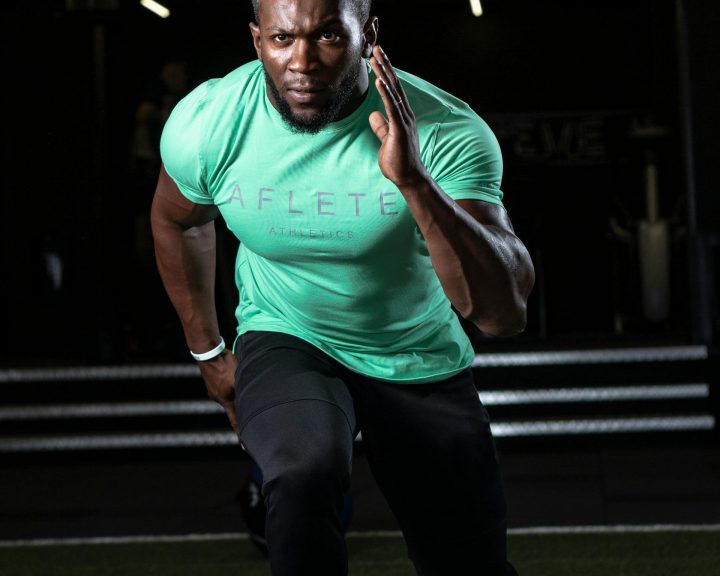As strength and conditioning coaches, we often make the claim that strength is important for athletes. Sometimes this is to overcome external objects (like another player or a shot put), sometimes this is for injury prevention, and sometimes this is because athletes must exert force against the ground to sprint and change directions. Keiner et al (2014) conducted a two-year study of elite German youth soccer players (15-19 years old) to determine if there was a relationship between strength training and change of direction performance.
The authors divided 112 subjects into two groups. One conducted strength training twice a week, one did not. Both groups trained soccer 3-4 times per week. The strength training group performed a pretty fundamental total body strength training session twice a week, build around exercises like squats, deadlifts, bench presses, etc. The training program was periodized. All subjects were tested on their ability to change direction and on the 1-RM front squat and 1-RM back squat. Each group (strength vs. non) was further divided into cohorts based upon age at the beginning of the study (C = less than 15, b= 15-17, A=17-19).
Results:
- Depending upon the age of the subjects, the strength training group increased their 1-RM front squat by between .7 kilograms/kilogram of body weight and .9 kg/kg. This resulted in mean front squat 1-RMs of 1.2-1.5 times body weight. The non-strength training group increased theirs by .1-.2 kg/kg of body weight, for mean 1-RMs of .5-.9 times body weight.
- The strength training group increased their back squat by between .8 kg/kg of body weight and .9 kg/kg of body weight, which resulted in mean 1-RMs of 1.3 to 1.7 times bodyweight. The non-strength training group increased theirs by .2-.3 kg/kg of body weight, for mean 1-RMs of .7 to 1.1 times body weight.
- All strength training groups, regardless of age, improved their agility test performance by .1 to .3 seconds.
- Only the youngest group of non-strength training athletes improved their ability times, by around .1 seconds. All other cohorts had theirs increase over the two years.
- There were significant correlations between front squat 1-RM, back squat 1-RM, and agility performance. The correlations were around .4-.6, with the highest correlations being associated with the longer agility tests (i.e. 10 meter sprints as opposed to 5).
This is a fascinating study. I frequently criticize studies like this for not employing athletes and not being long enough. This study overcomes both. It also employed a sport-specific agility test. Even though it is not detailed out in here, since both groups are training for soccer 3-4 times a week both are getting some speed and agility training, though it may be more focused towards soccer skills/strategy as opposed to the techniques of speed and agility. Both groups are growing and developing physically as a result of their ages. As far as I can tell from the article, the strength training is the major variable here.
Why would strength training have such an impact on agility? Strength is going to be important for starting a sprint, for overcoming the athlete’s inertia. It’s going to be important for decelerating. It’s also going to be important for pushing off the ground when moving from one direction to the other. And, in theory, strength is going to be important for exerting force against the ground while sprinting.
Keiner, M., sander, A., Wirth, K., and Schmidtbleicher, D. (2014). Long-term strength training effects on change-of-direction sprint performance. Journal of Strength and Conditioning Research, 28(1), 223-231.




